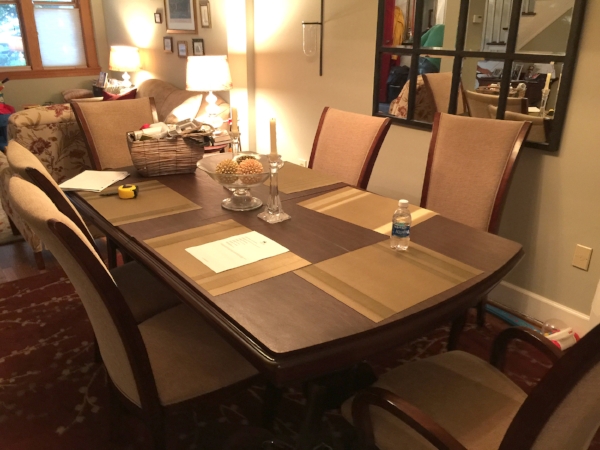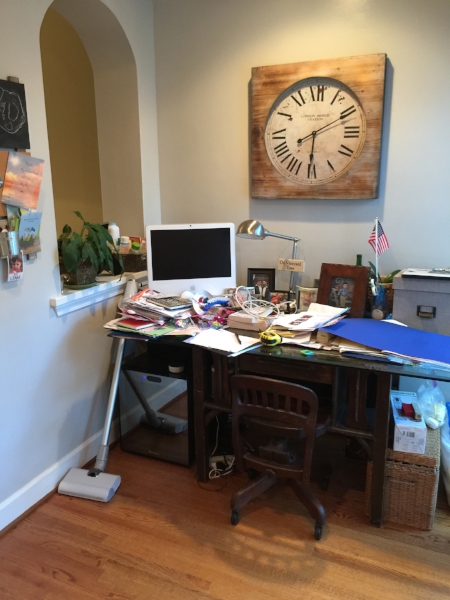While interior design is thought to primarily be concerned with aesthetics, some of the biggest transformations when working with a designer or decorator are measured by the function of the space for the person(s) that call it home.
That is exactly the case with the family I had the pleasure of working with in southeast DC recently. While they loved their DC rowhome, with two rambunctious kids, the space (and more importantly the furniture) they had did not match their style or need for flexibility. At the heart of this challenge was a beautiful, traditional six-seat dining room table that rarely was used partially for fear of it falling prey to adorable but potentially destructive young hands. This piece was creating a physical and emotional block that was preventing the space from meeting their needs.
Other challenges that came up through our consultation included:
- Frantic feel when you entered the house and a need for organization;
- Limited space for kids to play (especially important with all the rainy days we've had lately);
- Multiple dining spaces but none of which met all their needs; and
- Untapped space in the kitchen that housed a mostly unused desk turned drop area.
To tackle these problems, we identified a few keys tasks and pieces that would transform the design and function of the home:
- Consolidate dining spaces from three to two, including adding a cost-effective dining nook and new, kid-friendly drop-leaf dining room table (allowing the dining room to become a larger playroom, when needed);
- Bring more modern lines and finishes to the space, playing into existing wrought iron elements and adding more casual/weathered wood elements;
- Modernize the color palette, while working with the existing wall color (Benjamin Moore's Spanish Olive);
- Incorporate flexible pieces that can work in multiple spaces and be moved easily, as well storage options (primarily for toys); and
- Add sophistication by juxtaposing patterns and textures.
And here's where we are now (photos by Beth Caldwell):
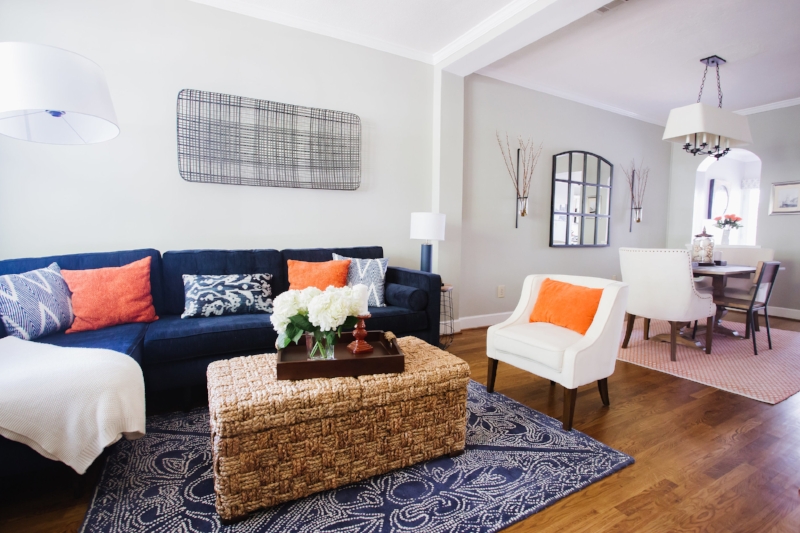
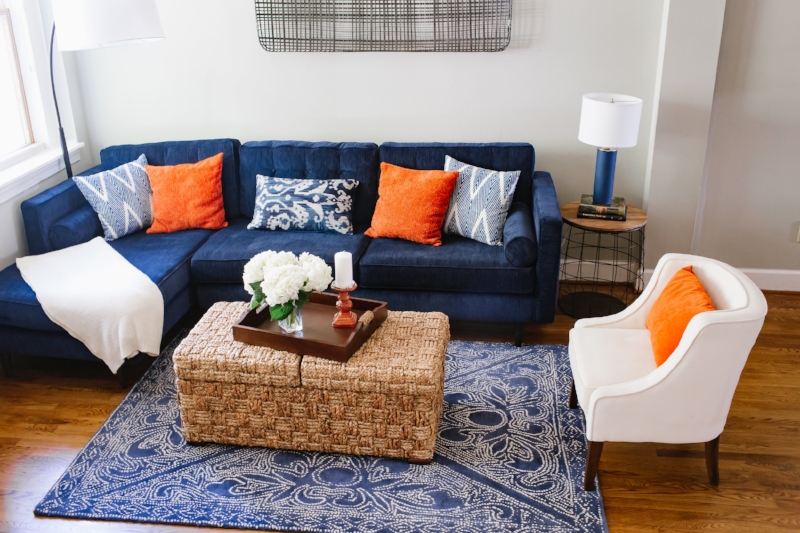
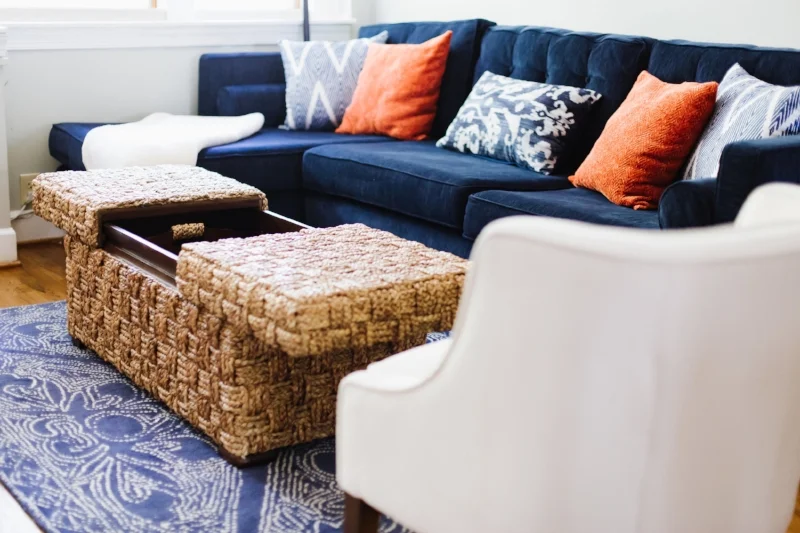
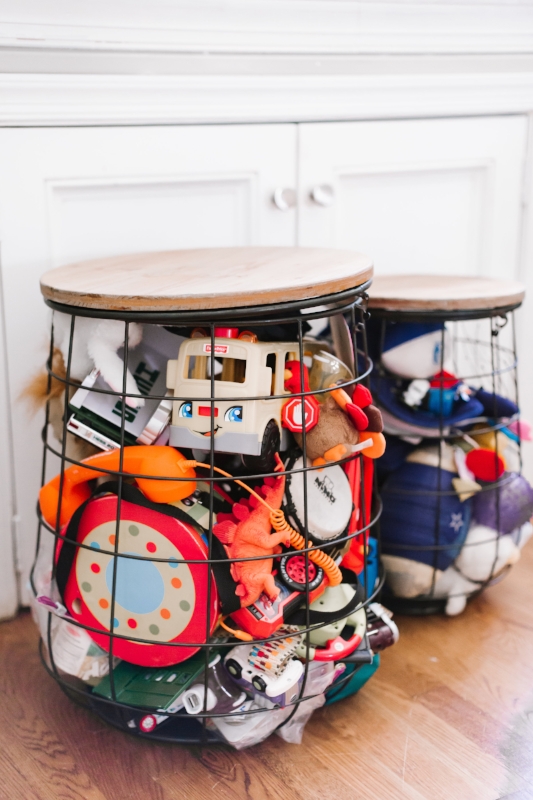
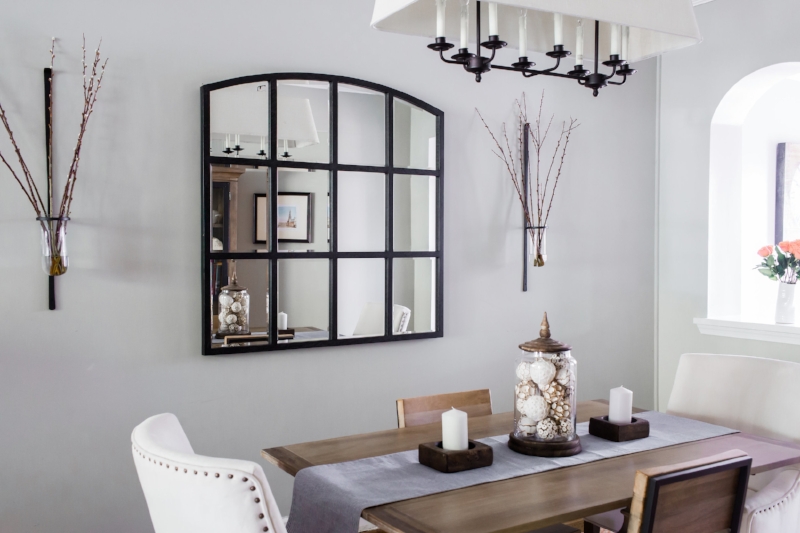
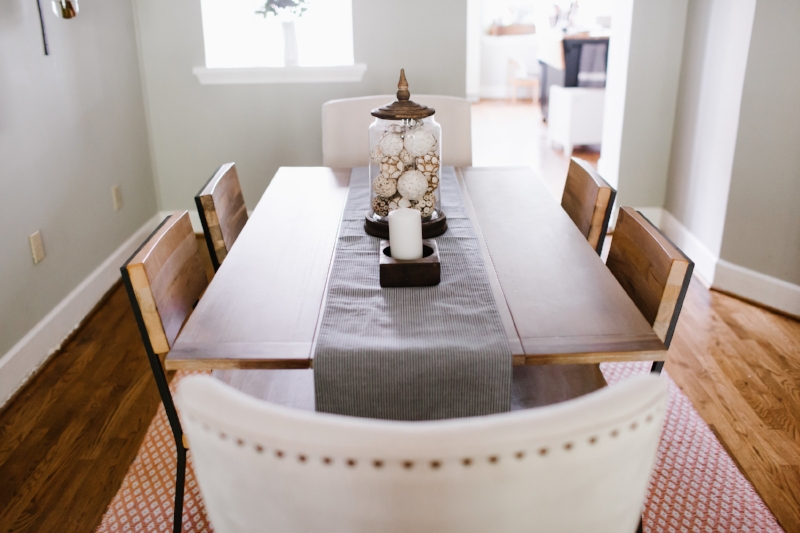


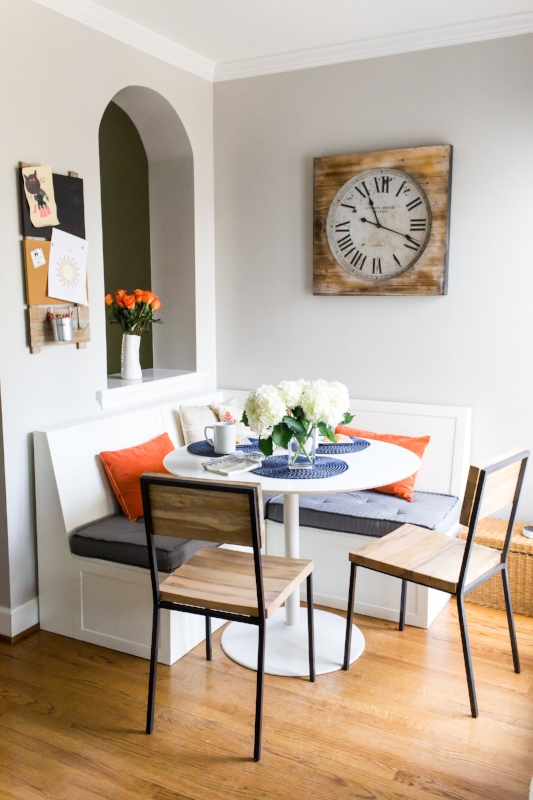
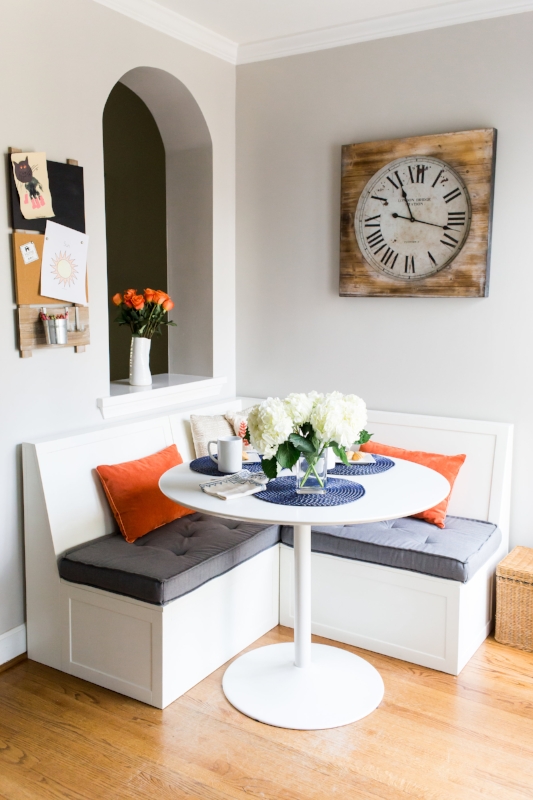
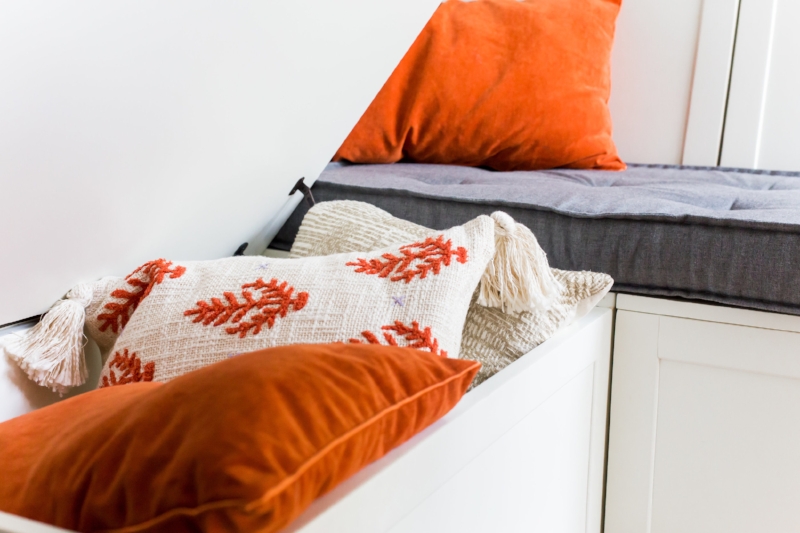
While there is still room for some more touches (new/updated upholstered cornices above the windows, removing baseboards in dining nook for a more custom look with the benches, adding a console in the dining room for extra serving space, etc.), the transformation has helped my clients enjoy their home even more...which is always priority number one from the outset.
Goods Guide
Living Room
- Braxton Sectiona in Bentley Indigo with Mocha Legs (Joybird)
- 5’ x 7’ Mirabelle Rug in Indigo (Serena & Lily)
- Andros Sliding Trunk (Grandin Road)
- Molly Accent Chair in Stella Ivory (Grandin Road)
- Tobacco Basket Metal Wall Art (Crate & Barrel)
- Three-Piece Metal and Wood Basket Set (Wayfair)
- Modern Cylinder Ceramic Table Lamp in Navy Blue (Shades of Light)
- Loden Arc Floor Lamp (World Market)
- Oliver 100% Cotton Throw Pillow in Navy (Wayfair)
- Lindon Spice Throw Pillow (Pier 1)
- Lindon Spice Lumbar Pillow (Pier 1)
- Printed Indigo Throw Pillow (World Market) - No Longer Available
Dining Room
- Bradding Collection Drop Leaf Natural Stonewash Dining Table (Pier 1)
- 6' x 9' Safavieh Handmade Boston Flatweave Orange Cotton Rug (Overstock)
- Aimee Accent Chair in Stella Ivory (Grandin Road)
- Raw Mango Rustic Dining Chair (West Elm)
- Fort Oglethorpe Lighted China Cabinet (Birch Lane) - No Longer Available
- Pre-Existing Wall Mirror, Sconces & Chandelier
Dining Nook
- Breton Banquette - Two 30" and One Corner (Ballard Designs)
- Odyssey White Dining Table (CB2)
- Raw Mango Rustic Dining Chair (West Elm)
- Embroidered Rue Pillow (Anthropologie)
- Lindon Spice Lumbar Pillow (Pier 1)
- Custom Banquette Cushions; Pre-Exising Wall Clock
Amber Harris is the owner of At Home DC, an interior decorator and a licensed real estate agent with Keller Williams Capital Properties working with clients in DC, Maryland and Virginia.



